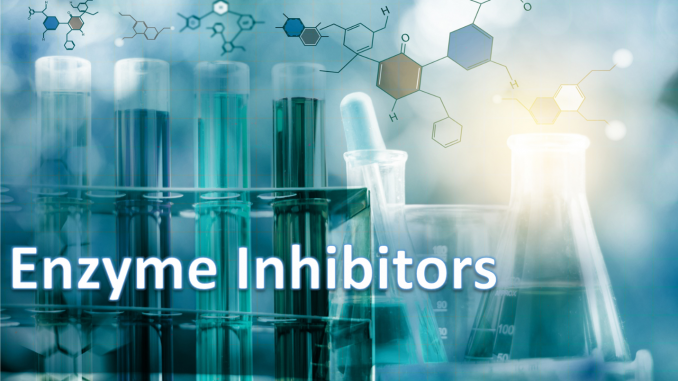
Modulators, moderators, or modifiers refer to compounds that influence the rates of enzyme-catalyzed reactions. The effect of enzyme inhibitors is usually to reduce the rate, while the enzyme activators can increase the rate of enzyme reaction. The molecular events leading to the experimentally observed effects has to be understood when studying these phenomena. A basic explanation for the so-called mechanism or mode of action of a substance on the enzymic reaction can be studied by a number of techniques under investigation. Although the methods for solving the 3-D structure of enzyme-inhibitor complexes result in clear steric presentations, and quantum mechanical calculations provide data consistent with basic physicochemical laws, the great practical value of classical kinetic information cannot and must not be neglected. In addition, not only the mode of action of an inhibitor is important, but also its effects on the substrate turnover provide information that cannot be obtained from studies of pure enzyme substrate systems.
According to the basis of enzyme kinetics, enzyme inhibitors can be divided into two groups. One group consists of reversible inhibitors that form noncovalent interactions with various parts of the enzyme surface, which can be easily reversed by dilution or dialysis. The other group consists of irreversible inhibitors that interact with different functional groups on the enzyme surface by forming strong covalent bonds that often persist even during complete protein breakdown.
Reversible Inhibitors
Based on the relation between the velocities of the inhibited and uninhibited reactions, reversible inhibitors can be divided into three types: noncompetitive type, competitive type and uncompetitive type. The degree of inhibition is unaffected by change in the substrate concentration in the pure noncompetitive type, reduced at higher substrate concentration in the competitive type, and increased by increasing substrate concentrations in the so-called coupling, or uncompetitive behavior.
Although the different types of inhibition imply ideas about the mechanism of inhibitor action, they cannot necessarily be interpreted in terms of the molecular events described by the particular type. Nevertheless, it is expected that structural similarities between the substrate and the inhibitor exclude simultaneous binding, leading to a reduction of the degree of inhibition with increasing substrate concentration and, thus, to competitive inhibition. On the other hand, if the two can become attached to the enzyme simultaneously, their structures are unlikely to be similar so that they do not compete, and the inhibition is termed noncompetitive.
Irreversible Inhibitors
Irreversible inhibitors are compounds that interact with the enzyme in such a way as to cause permanent loss of activity. They can make stable covalent bonds with the enzyme active-site residues, therefore they are referred to as catalytic poisons. If such binding occurs, the inhibitors are needed only in trace amounts because each inhibitor molecule eventually finds its own enzyme molecule and abolishes the latter’s activity. In practice, the formation of a stable covalent bond is so slow that the rate of inactivation can usually be determined by following the time course of residual enzyme activity, after various preincubation times with the inhibitor, even under conditions when the inhibitor is in great excess. Consequently, if the reaction is started by the addition of the enzyme, the initial activity would be unaffected by the presence of such an inhibitor. Sometimes, however, every encounter of the inhibitor with the enzyme does not lead to successful bonding. In such cases, irreversible inactivation is preceded by a reversible step, similar to the classical reversible inhibition.
Related Products at Creative Enzymes:
Related Services at Creative Enzymes:
Screening of Substrates, Inhibitors, and Other Ligands
Reference:
Wiederschain G Y. Enzymes and their inhibition. Drug development [J]. Biochemistry, 2006, 71(5):582-582.

Leave a Reply